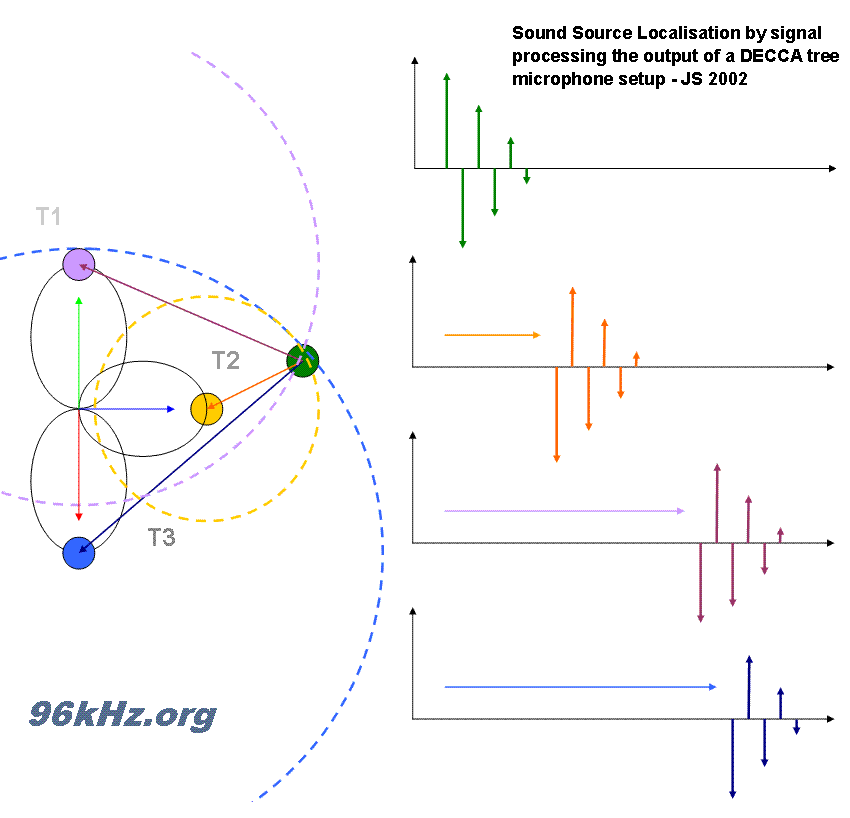| 96 kHz.org |
| Advanced Audio Recording |
|
sound source localization
The DECCA tree is a microphone setup commonly used for orchestra recordings. It offers both a suitable recording angle and localization of the sound sources. When playing with various setups and microphone distances, I once had the idea to use it also for signal processing based sound source localization.
the "decca radar" setup Using a pre defined pattern consisting of a number of short impulses like also used to generate impulse response files for IR-based echo processing as with SEK'D Samplitude, all available signal responses occurring in the three receiver channels where processed using a circle fitting algorithm. Theoretically 2 microphones with OMNI characteristics should do too, when taking the nonlinear off axis response into account making it possible to decide if the sound source is not in the front area but in the rear, because the higher frequencies are different in both of the positions obtained from the two possible circle equation solutions. But investigations show, that the three microphones offer three such solutions leading to more precision finally. Leaving aside the redundancy offered by this setup and again processing the channels assuming precise reflections, also the third dimension, the height of the sound source can be discovered.
Conclusion and Summary A microphone setup like or similar to the known DECCA tree can be used to record and simultaneously localize simple sound sources. For a high precision resolution, more than 3 microphones will be required most probably using redundant processing and 3D spherical processing.
Have a closer look at the DSP-System
|
| © 2002 - Dipl.-Ing. Jürgen Schuhmacher |
